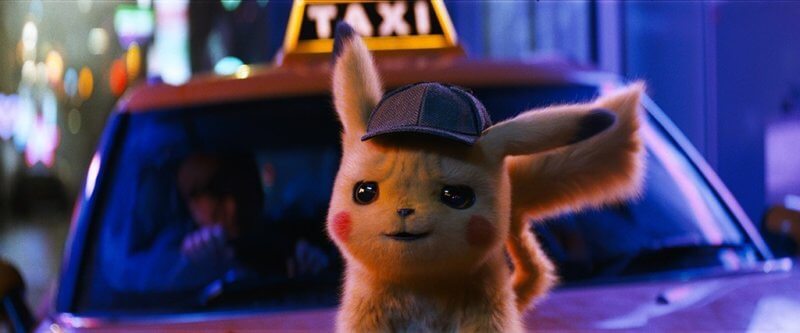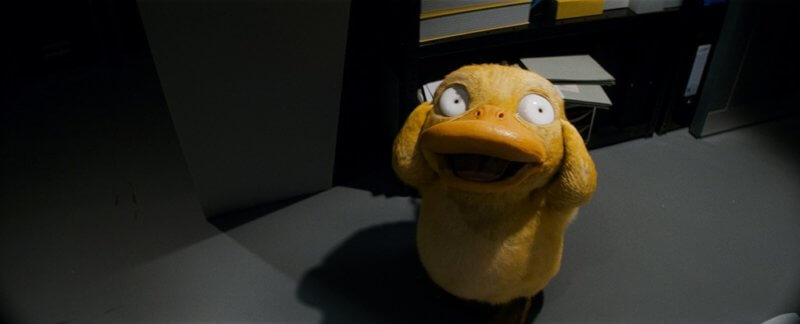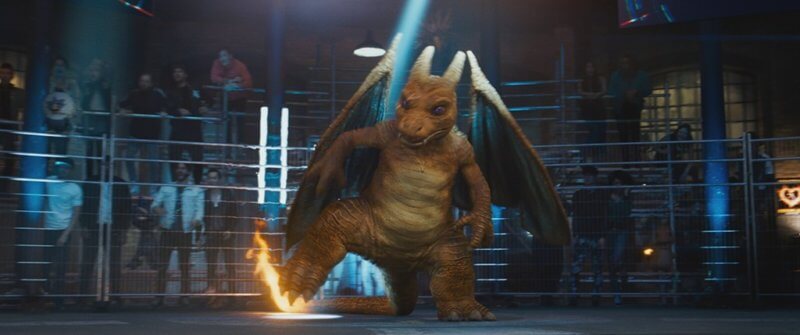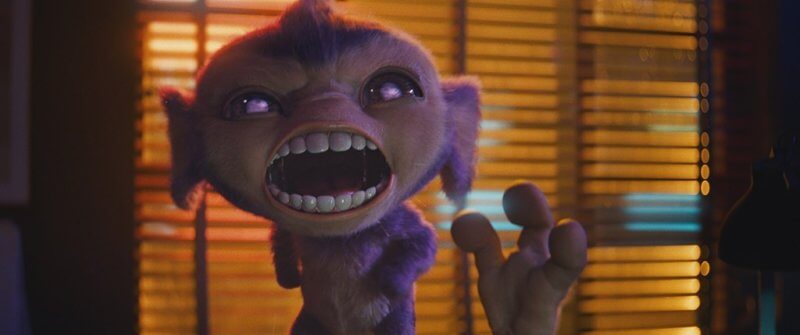Animating Detective Pikachu: Interview with Framestore Animation Supervisor Dale Newton
Based on the 2016 video game ‘Detective Pikachu’, the film of the same name hit UK cinemas last month where it topped the box office with a £4.9 million debut. Ryan Reynolds stars as the voice and facial motion capture of Pikachu, while the visual effects were provided by a range of studios: MPC, Framestore, Image Engine, Rodeo FX, and Instinctual VFX.
Framestore’s Animation Supervisor Dale Newton spoke to us about bringing the latest Pokemon installment to the big screen…
Tell us a bit about your work on Pokemon: Detective Pikachu – how would you sum it up in a nutshell?
Well firstly, the dry version – I was responsible for all Framestore’s animation on Detective Pikachu for both London and Montreal. The not so dry version – it’s been a bit of a joyride really! Jonathan Fawkner (Framestore’s VFX Supervisor) and I met Rob Letterman (director), Erik Nordby (VFX supervisor) and Greg Baxter (VFX producer) in June of 2017 when Rob first laid out his vision of bringing this anime classic into the a gritty “’bubblegum noir’ world of Detective Pikachu. Since then it has been a whirl of concept work, creature development, pre-vis work, on set supervision and shot production. Not only have we had brilliant clients who have trusted us to deliver and given us the space to do what we needed, we have also been blessed with an amazing team of artists, TD’s and production crew at Framestore to make this show sparkle.
So many people are really invested in Pokemon – it’s a phenomena now, and also a huge part of many peoples’ childhoods. Were you a fan and, if so, did this weigh on you at all when it came to approaching the work?
I’m little too old to have enjoyed the formative Pokemon craze as I was too busy forging a career in CGI animation in the 90s! Fortunately, I did have an exposure to Pokemon in those years through various connections to the children in my life: friends’ children, nephews and so on through to experiences more recently with my own three children. Talking to a lot of fans we have at Framestore who grew up with Pokemon in the nineties (many of our crew are now of this age) I got the clear impression how passionate many of these fans still are about their beloved Pokemon. There was a clear brief from client to learn as much as possible about the characters and Pokemon in general and let this inform our work. We researched every character thoroughly, from background story trivia from the anime, to battle moves across the anime and various gaming platforms. We were not to re-invent these characters, instead giving them new form in a real world. Finding the new looks and performances of characters that everybody already knew and loved was a big part of this job.
What kind of challenges did you face as an animator?
Pikachu himself was a challenge all on his own! MPC were lead vendor for Pikachu, and when final geometry and groom were delivered to us, we found ourselves having to continuously develop and work into the rig and the blendshapes well into shot production to make the most of his potential and ensure he was as appealing and adorable for as much of his screen time as possible. Many sequences were rig locked to older asset updates as animation needed to be approved before the Pikachu asset was final animation approved. If there was time we went back and plussed the rig locked scenes with updates to his facial and eye setup that came after the animation was approved.
Finding a Pikachu performance was a blend of several sources. Firstly we looked closely at his design and anime staging, being as aware as possible of the design rules of what makes his 2D representation so charming and adorable – and channeled this into our staging and posing. This relates to both body staging and facial expression – some shapes plainly didn’t work. We needed to ensure that he retained his distinctive features – his large and round eyes and smallish animal (w-shaped) muzzle – as much as possible, all the while remaining expressive and communicating the story. Secondly, Rob Letterman was very vocal about the need for all the creatures, Pikachu included, to feel as realistic as possible. He had already identified the skittish and jumpy behaviour of bush babies as being a good starting point. We sought as much reference as for his larger physical actions – Raccoons and Red Pandas bear a good physical resemblance to our Pikachu. Thirdly – as far as acting choices were concerned – we made sure there were witness cameras present at all of Ryan Reynolds’ voice recording sessions – and this reference was provided as a springboard for the animators. Invariably, some shots required a different take to Ryan’s and the acting evolved in a different direction while some sequences stuck to Ryan’s performance fairly closely.
The very stylised form of many characters became a challenge in many cases. Although The Pokemon Company had been open to reinterpreting the surface characteristics of many characters, a character’s silhouette was quite often an area of little give. A good number of characters have physiology that would simply never exist in the real world. We had a good many super-sized heads in the line-up: Rufflet, Treecko, Sneasel, Purrloin to name but a few, making fast or flighted locomotion particularly challenging. While others had really large heads and VERY short arms and legs, Pancham and Squirtle for instance – making a convincing run – or even just reaching and grabbing something quite difficult. Some characters like Gengar, Loudred and Jigglypuff are practically all head! Fans would certainly expect to see the very stocky, small-winged Charizard flying. Sending Charizard on a diet and a workout regime was required to enable him to fly convincingly. Fans commented on this when Charizard appeared in the trailer for the first time – indicating the passions roused when taking too many liberties with the Pokemon. Suffice to say that animators love nothing more than a challenge and it was a delight to attempt to conquer every facet of these challenges as they were required for the film.
Rob Letterman wanted it to feel like this film was shot in a richly populated Pokemon world. Backgrounds needed to be populated with Pokemon busying themselves assisting in the activities of their fellow humans – as is the ethos of Pokemon in Ryme City. One example is the background characters in the Underground Battle sequence. We set up a team of animators and technical animators to focus on populating these shots. They began by creating cheering animation cycles for 32 separate characters selected for the sequence. They then created a master scene and laid out these cycles, duplicating until we had around 62 background characters in the arena. These were then dropped into the more than 70 shots requiring background characters. Only then deciding, which required further animation work. We needed to make sure that the characters were consistent and interacting with the live action crowd. Working this way we got away with minimal animation work where we might not have seen it anyway due to camera work or lighting and put time into only the characters we got to see in the end. We also had our offshoot affiliate studio partners Minimo in Barcelona help us out on a similar background character sequence at the end of the film.
Who was your favourite character to work on and why?
JigglyPuff! Come on, he’s all eyes and fluff! I personally lament his lack of screen time in Detective Pikachu and think some of the more successful motion studies were his… hers… its… you know what I mean! I think a short film spin-off that features Jigglypuff is mandatory (Greg Baxter! You reading this?)
And who was the most challenging character?
Aipom’s physiology was interesting indeed. Having a very large head, no hands (so no grabbing) and a single oversize hand at the end of his tail necessitated the Montreal animation team to be very, very inventive with his style of movement. He had a 100+ shot sequence where he was expected to attack Tim and chase him across a rooftop, removing items of Tim’s along the way. There were many tricky live action / CG character interaction shots in that sequence to boot! The Harry’s Apartment and Aipom Rooftop sequence in which the Aipoms feature in large numbers kept our team in Montreal on their toes, or shall I say tail-hands, for around six months!
What was the most fun or rewarding part of working on Pokemon: Detective Pikachu for you?
Working with our simply awesome team across the board. For the animation team on Detective Pikachu: we had a team of around 30 with three leads in London and 25 animators with two animation leads in Montreal. So many of our team invested themselves so highly to bring every aspect of this show to life! From unearthing the right level of sarcasm for some Pikachu shots to maxing out on adorability in others, the team brought so much to the table and I am indebted to everybody who worked on this show.
Being involved in this production right from the very beginning made so many aspects of the this show much more straight forward. Not only had we earned the client’s trust early on, but we were able to make very logical assumptions about client expectations to always be in a position to put our best foot forwards.
Detective Pikachu is out now in cinemas across the UK.






